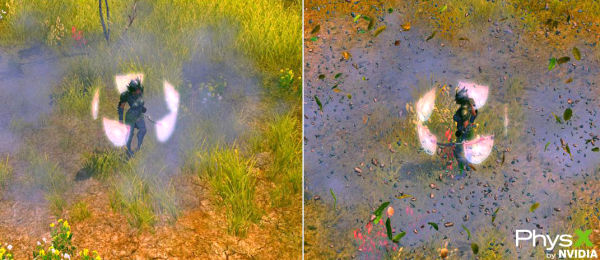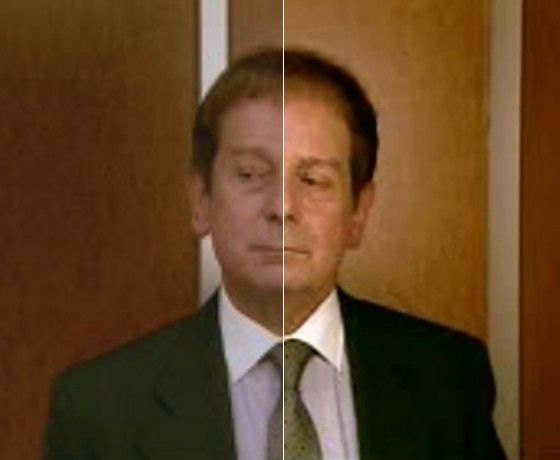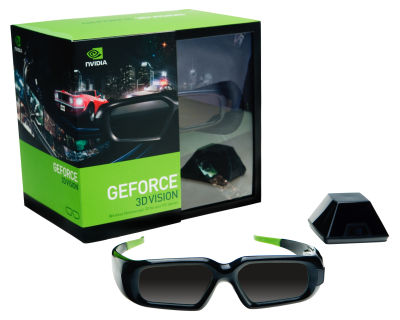 |
||
|
||
| ||
NVIDIA PhysXWe cannot help mentioning the PhysX technology in a review of a graphics card from NVIDIA. Especially as dozens of games support it, and NVIDIA already interested three biggest game developers in this technology last year: Electronic Arts, 2K Games, and THQ. And they already promised to use it in their future projects. It's supported by the most popular engines and development tools: Unreal Engine 3, Gamebryo, SpeedTree, Natural Motion, etc. Besides, PhysX is a cross-platform technology as far as it's possible. Along with PCs and all desktop consoles, it's also supported by iPhone. On a different level, of course. Apart from already familiar games with PhysX support (GRAW 2, Warmonger, MKZ, Unreal Tournament III, Mirror's Edge, Cryostasis, etc), NVIDIA presents PhysX-capable games that have appeared or will appear in 2009: Star Tales, Shattered Horizon, Underwater Wars, Metro 2033. There have already appeared patches with improved physics effects for two games ( Sacred 2: Fallen Angel and Cryostasis). Sacred 2: Fallen Angel was released last year in Autumn. And since that time Ascaron has been working on the patch to add GPU-assisted physics effects to the game. Most changes have to do with various effects with many particles -- weather and spell effects. Here is an example.  All particles used in these effects (foliage and stones in this case) collide with the ground and other objects physically correctly, they are also affected by wind. About 10000-20000 particles are simulated in each frame, so this job can be done at acceptable speed only by a GPU. According to NVIDIA, the speed of hardware accelerated physics computations grows more than fivefold. Cryostasis uses such effects as dripping water and melting ice, physically correct particle systems: water, sparkles, snow, dust, as well as cloth simulation: flags, clothes, etc. Besides, the April patch will update physics effects. As in the demo version, the game will have water simulated with particles and other GPU-accelerated physics effects. But not by patches alone. New games with PhysX support will be released. One of interesting titles with this support is Star Tales -- social network games (whatever it means) from a Chinese developer QWD1. Judging by its description, Star Tales is sort of an online version of The Sims based on Unreal Engine 3 with hardware-accelerated PhysX. Characters in this game use cloth simulation, their clothes look very realistic. Besides, the game uses particle systems. The company released a technical demo and a benchmark to evaluate these new features: The Star Tales benchmark uses several characters with cloth simulation, the scene contains about 14000 vertices to imitate cloth physics. Falling petals (their collisions with characters and floor) also demonstrate physically correct behavior. It's a complex job for a CPU, and Star Tales uses a GPU to compute frames at a sufficient frame rate. According to NVIDIA, even GeForce GTS 250 provides rendering in high resolutions with top graphics settings and cloth simulation at the frame rate above 30 FPS, which cannot be said about powerful CPUs. Among other games with PhysX support to be released this year NVIDIA mentions Underwater Wars from Biart Studio (action, end of 2009), Metro 2033: Last Refuge from 4A Games (first-person shooter, end of 2009) and Shattered Horizon from Futuremark (first-person shooter). They are all interesting, of course, but we don't know that much about these projects. Anyway, NVIDIA has an obvious market advantage, even though its competitor showed Havok demos using OpenCL for GPU acceleration at GDC. Even if there appear games with this support, they will also work with NVIDIA GPUs (as they support OpenCL just fine), and they will accelerate physics effects through Havok as well. It does not cancel their advantage in PhysX. That is, while GPUs from other manufacturers are limited to the Havok engine working with OpenCL, NVIDIA offers products supporting both popular physics engines: Havok with OpenCL and PhysX with CUDA. PhysX may eventually get support from other APIs for parallel computing. But it's a political issue rather than a technical one. NVIDIA CUDAGeForce GTX 275 supports CUDA just like any other modern card from NVIDIA. Much time has passed since the appearance of the first CUDA-applications for common users, such as Badaboom (to transcode video). The market is finally stirring. We can mention the following CUDA-applications that have been released recently:
We already described some of the applications in our articles. Now let's examine some of the new programs. MotionDSP vReveal -- this application is used to process video data, it improves quality of low-bitrate video, such as online or mobile video clips. That's how it looks like (original video on the left, improved version on the right).  This picture hasn't been taken from advertising materials, where horrible video is magically turned into HD Video, almost like in blockbusters from Hollywood. That's what vReveal really does. As we can see, brightness and contrast changes have a strong effect on video quality. Besides, we can notice a minor resolution improvement (look at the collar and other lines). But these are not miracles. It's a static example, dynamic results are more impressive. Unlike usual post processing of each frame separately, this utility analyzes up to 30 frames before and after the current frame. This is done to stabilize the image and eliminate shaking, common among non-professional video recorded with small cameras without tripods. When vReveal uses only a CPU, it slows down almost fivefold. According to NVIDIA, even an inexpensive GeForce GTS 250 is twice as fast in this task as one of the fastest CPUs from Intel -- Core i7 920. We'll try to check it up in our future articles. Another interesting application is LoiLo SuperLoiloScope "Mars". It's a simple video editor supporting high resolutions (1920x1080). Its features: GPU-assisted GUI, hardware-assisted H.264 video decoding and encoding(!), hardware-assisted video processing, filters and effects. When these functions are executed by a GPU, they run ten times as fast as in case of a pure-CPU version. GeForce 3D VisionGeForce GTX 275 also supports GeForce 3D Vision. We already described this stereo imaging technology. Now we'll deal with several more features. GeForce 3D Vision kit includes the following items: wireless LCD shutter glasses, IR emitter (USB), nose pieces, cleaning cloth, CD with software, CD with demo programs, Guides, and cables: VESA stereo, DVI-HDMI, USB.  The wireless glasses use a high-quality optical system with high resolution and wide viewing angles compared to passive glasses. The glasses use the IR technology to transfer data, so they work well within six meters from the emitter. Up to 40 hours of battery life. The key advantage of GeForce 3D Vision is its excellent compatibility with games. NVIDIA's stereo driver provides integrated support for stereo rendering in games. The list includes over 350 of such titles. The stereo drivers are based on the same code as the usual drivers, and stereo support in games is similar to SLI profiles with ready settings for each game. They also support 3D video players and stereo viewers. By the way, support for external interfaces in GeForce GTX 275 does not differ from what we saw in previous models: GeForce GTX 260 and 285. The graphics card is equipped with two Dual Link DVIs supporting HDCP. You can use adapters to output video to the popular HDMI, audio in this case will be received from a sound card. Windows 7 readinessProbably for the lack of really interesting innovations in new solutions, both manufacturers mention their readiness for the upcoming Microsoft Windows 7. Both AMD and NVIDIA tell us about their tight cooperation with Microsoft, how well their drivers support this operating system, and what excellent feedback they get from Microsoft people. They even show diagrams where competing graphics cards demonstrate worse results than their own products. It's too early to evaluate 3D performance in Windows 7. This operating system hasn't been released yet. However, we can already discuss some of its features. It will be the first OS to support computing with CPUs and GPUs. Windows 7 features an updated driver model WDDM 1.1 that accelerates 2D and 3D rendering, offers improved video memory management and higher performance. Aero interface in the new system supports DirectX 10 acceleration, plus new APIs to accelerate 2D graphics: Direct2D and DirectWrite. But the most important GPU-related feature is DirectX Compute -- compute shaders in DirectX 11. DirectX Compute will bring hardware acceleration to image processing (various post filters), video processing (denoise, autocontrast, transcode, etc). As in case of NVIDIA CUDA, compute shaders will be used in games (physics effects, ray tracing, post processing, etc) as well as in technical and scientific computations. NVIDIA already offers DirectX Compute demos: rendering an ocean expanse, particle systems, and N-body simulation. These demos use compute shader features in DX11, doing complex parallel computing (FFT, bitonic sorting, etc) with CUDA-compatible GPUs. Compute shader support is very important for the industry, because unlike CUDA, it's not tied to a single manufacturer, and programs will run on all compatible GPUs from different manufacturers. Write a comment below. No registration needed!
|
Platform · Video · Multimedia · Mobile · Other || About us & Privacy policy · Twitter · Facebook Copyright © Byrds Research & Publishing, Ltd., 1997–2011. All rights reserved. |